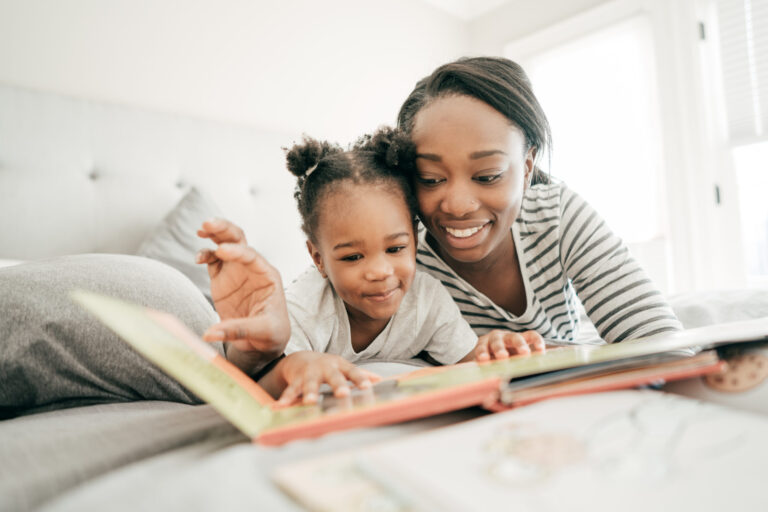In order for children to comprehend what they read when they are older, they need to understand and use wide variety of “interesting” words while they’re little. Some experts say a child must hear a word 12-15 times before it becomes a part of their vocabulary. Throughout the week, use the target words from the story with your students, beyond the book, so they have plenty of opportunities to hear and use these new words!
Video: Owl Babies START Read 1
This week’s book is Owl Babies by Martin Waddell. This first read focuses on explaining the key events of the story and pushing in target vocabulary..
Video: Owl Babies, START Read 2
This week’s book is Owl Babies by Martin Waddell. This second read focuses on the character’s thoughts and feelings about the key events of the story and continues to push in target vocabulary.
Tying it Together
Talk about the book whenever and wherever works best for your class. Throughout the week, engage in meaningful conversations around these words. Soon, you will notice them becoming part of your students’ vocabularies!
| Target Vocabulary | Conversation Starters |
|---|---|
| Wish – When you really hope something is going to happen | When the baby owls woke up, they discovered their mother was gone! Do you remember how they closed their eyes and wished their mother would return? They really hoped she would come back soon! Ask your students, “Why were the baby owls wishing she would come back?” |
| Huddled – to sit or stand very close to others | The baby owls came outside their nest and they huddled together, they stood really close to one another. Ask your students, “Why did the baby owls all huddle so close together?” |
| Frightened – scared, afraid | Remember how the baby owls were all huddled together? They were really frightened. They were afraid or scared. Ask your students why the baby owls were frightened. |
Paving the Way to Reading
Path Finder: Vocabulary Video
Hearing interesting words and having the opportunity to use them in conversation will build your students’ vocabularies. Watch this video from our COX Campus and then take our Power of Language course to learn more!
Children need to hear words repeatedly in various contexts to fully understand their meaning and to make them part of their vocabulary. Check out our Building Vocabulary Teaching Aid on Cox Campus.
Phonological Awareness: Syllable Awareness
Syllable Awareness: Learning to understand that words are made up of separate beats, called syllables.
Remind children that they were able to separate sentences into individual words and explain that they can also separate words into parts called syllables. Explain that syllables are the beats we hear in words. For example, say, “Listen to the beats you hear in this word: rainbow – rain (clap) – bow (clap).” Practice clapping out different length words, try using the names of the children in your class, or check out our list!
Alphabet Knowledge: Hungry Monster
Use upper-case letters to continue to support your students’ learning the letters of their first name. Watch this video to learn how you can do this with the students in your class!
Monitoring Your Students’ Progress
Now it’s your students’ turn to tell the story, showing you what they’ve learned, so you can monitor their progress. Say to your students, “Remember the book we heard this week about the baby owls and how they woke up and discovered their mother was gone? Now that you know it so well, you get to tell the story! I wonder why Sarah said her mother would bring back mice and things that are nice. Let’s think about this as we talk about what happened in the story.”
- Why did the mother owl leave her babies?
- How did the baby owls feel when they woke up and discovered their mother was gone?
- Why did the baby owls huddle so close together?
- Why did Sara say that her mother would bring back mice and things that are nice?
This week, we have focused on the importance of intentionally having conversations with our students using target words from the book throughout the week. As you encourage your students to talk about the story, pay close attention to the language they use. Do they use any of the focus words (frightened, wished, huddled)? Be intentional with your questions and give them an opportunity to use these words. If a student says that the baby owls were standing very close together on the branch, are you able to “pull” the word huddled out? “Yes, they were standing really close together. What is that called when you get really close to others?” If the student is unable to answer, give them a cue of how the word sounds-”H” or a choice, “Are the owls far apart or are they huddled together?” or even a yes/no question.
When you use the target words in conversations with students throughout the week, the words will become part of their vocabularies! Each week incorporate the words from the story into your conversations, and soon you will see your students using these words on their own!
The Cox Campus is committed to ensuring literacy and justice for all. Through impactful strategies and learning experiences, families, educators, and anyone who works with children can make a difference by bringing the science of reading within reach for each child.




Thank you for sharing your resources. Your organization allows me to improve my teaching which in turn helps my students. I sincerely appreciate your quality program.
Thank you Cox Campus! I love Owl Babies and this helps so much to understand how to teach Key events, feelings, and vocabulary to children.